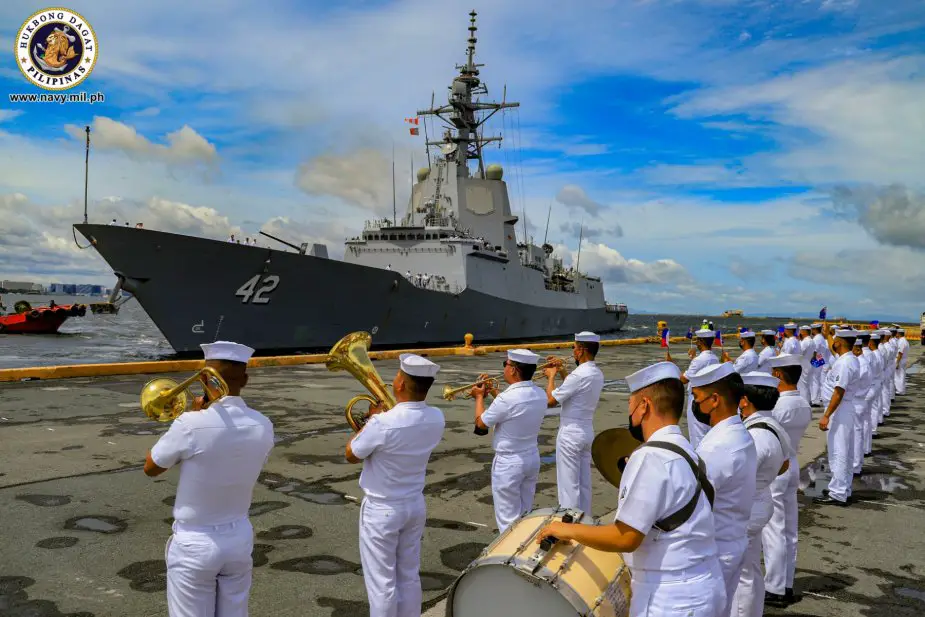Breaking news
Australian Hobart class destroyer HMAS Sydney visits Philippines.
According to a tweet published by the Philippines Navy on July 14, 2022, the Royal Australian Navy (RAN) Hobart-class air warfare destroyer HMAS Sydney (DDG 42) arrives for a two-day port visit.
Follow Navy Recognition on Google News at this link
 Hobart class destroyer HMAS Sydney in Manila, Philippines. (Picture source: Philippine Navy)
Hobart class destroyer HMAS Sydney in Manila, Philippines. (Picture source: Philippine Navy)
Philippine Navy (PN) contingent led by Offshore Combat Force Chief of Staff, Commander Johanns Cruzada accorded the visiting Australian Navy ship and its crew members headed by their Commanding Officer, Commander Andrew Hough a welcome ceremony upon arrival at the port.
The visit fortifies the strong and longstanding relationship between the Philippines and Australia in promoting maritime safety and security in the region.
About the Hobart class destroyer HMAS Sydney
HMAS Sydney (DDG 42), named after the city of Sydney, New South Wales, is the third and final ship of the Hobart class air warfare destroyers used by the Royal Australian Navy (RAN).
Each destroyer will have a length overall of 147.2 metres (483 ft), a maximum beam of 18.6 metres (61 ft), and a draught of 5.17 metres (17.0 ft). At launch, the ships will have a full-load displacement of 6,250 tonnes (6,150 long tons; 6,890 short tons).
The Hobarts have been designed to allow for upgrades and installation of new equipment, with a theoretical maximum displacement of 7,000 tonnes (6,900 long tons; 7,700 short tons).
The Hobarts use a more powerful propulsion system than their Spanish predecessors. The combined diesel or gas turbine (CODOG) propulsion arrangement consists of two General Electric Marine model 7LM2500-SA-MLG38 gas turbines, each generating 17,500 kilowatts (23,500 hp), and two Caterpillar Bravo 16 V Bravo diesel engines, each providing 5,650 kilowatts (7,580 hp).
These drive two propeller shafts, fitted with Wärtsilä controllable pitch propellers. The ship's maximum speed is over 28 knots (52 km/h; 32 mph), with a range of over 5,000 nautical miles (9,300 km; 5,800 mi) at 18 knots (33 km/h; 21 mph).


























